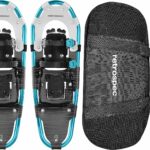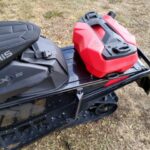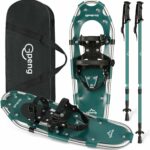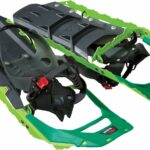Imagine it’s a cold, dazzling winter’s day. You’re all bundled up and excited to conquer the snowy terrain with your Polaris snowmobile. But alas! The key is nowhere to be found. Don’t let your day be spoiled. With this in-depth guide, you’re about to discover how to start a Polaris snowmobile, even if the key has disappeared into thin air. So, sit back, stay warm, and let’s learn some handy tricks together.
Understanding the Type of Ignition System
Before you dive into the process of starting a Polaris snowmobile without a key, it’s essential to understand the type of ignition system these machines deploy. It’s ideal to know what you’re dealing with before tinkering around with delicate parts of your snowmobile.
Assessing keyless ignition versus keyed ignition
Snowmobiles typically employ one of two types of ignition systems: keyless or keyed ignition. As with vehicles, a keyless ignition operates with a fob or a start button, providing smooth, push-to-start operation without needing to insert a key. On the other hand, a keyed ignition requires the correct key to be inserted into the ignition and turned. Most Polaris snowmobiles utilize a keyed ignition system, meaning losing the key can be a significant inconvenience.
Identifying Polaris snowmobile ignition system specifications
Polaris snowmobile ignition systems have specific characteristics unique to this brand. With its rugged build and advanced ignition system, your Polaris ATV is designed to endure the harshest conditions and still deliver impressive performance. Typically, Polaris found in older models would be a standard key and tumbler system, while the newer models might have an immobilizer system for added security against theft.
Safety Precautions Before Starting Your Snowmobile
Before you start manipulating your ignition system, it’s also crucial to reflect on safety precautions. The focus is to avoid damage to the ignition system and ensure personal safety.
Preventing damage to the ignition system
Delving into your snowmobile’s ignition system without proper preparation can risk damage to the intricate parts involved. Before bypassing the ignition system, disconnect your snowmobile’s battery. This prevents inadvertent short circuits that could be hazardous or damage your snowmobile’s electrical system.
Ensuring personal safety and avoiding accidents
In addition to protecting your snowmobile, you also need to keep your safety in mind. Always wear safety glasses to protect your eyes from potential sparks. Also, try to work in a well-ventilated area to avoid inhaling any toxic fumes accidentally. Lastly, make sure the snowmobile is on a flat surface and in ‘park’ mode to avoid any accidents.
Necessary Tools for the Job
To bypass your Polaris snowmobile’s ignition system, you’ll need some tools. These can be found at any good hardware store or online.
Identifying the essential tools
The most common tools you’ll need include a screwdriver, a pair of wire strippers, and electrical tape. You may also need a multimeter for checking electrical connections and a set of jumper cables.
Where to procure the necessary tools
You can find these tools at your local home, auto stores, or online on sites like Amazon. Make sure to invest in sturdy, reliable tools as they can last a lifetime if properly cared for.
The Process of Bypassing the Ignition System
Having taken safety precautions and equipped with tools, it’s time to discuss how to bypass the ignition system.
Identifying the switch wires
The first step is to identify the switch wires on your snowmobile. These wires commonly lead directly from the ignition switch and are typically red and black. If you’re unsure, consult a specific wiring diagram for your model.
Creating a bridge between ignition wires
Next, use your wire strippers to expose about 1/2 inch of the wire insulation. Then connect the red wire directly to the black wire, creating a bridge that will transmit power directly from the battery to the ignition system.
Special Case: Starting an Older Polaris Snowmobile
For older Polaris snowmobiles, the process may slightly differ. The ignition system in these vehicles typically features a different design.
Understanding older snowmobile ignition system differences
Most older Polaris snowmobiles use a simple keyed ignition system, which may lack advanced features like immobilizers. This makes the process a bit simpler, as there are fewer electronic components involved.
Specific instructions for older models
Once the wires are connected, older models often need the kill-switch to be put to the ‘off’ position and then ‘on’ again to fire up the engine. Just flick the switch and turn on the engine.
Starting Polaris Snowmobile with a Screwdriver
If you’re in a bind, you could also consider the screwdriver method, a makeshift tactic used by many to quickly start their vehicles.
Inserting the screwdriver into the ignition
To start the snowmobile with a screwdriver, insert it into the ignition in place of the key. Use a flat-head screwdriver that fit snugly into the ignition slot.
Twisting the screwdriver carefully
Once the screwdriver is inserted, gently apply pressure and twist it clockwise as you would a normal key. If successful, your snowmobile should fire up.
Understanding the Risk of Damage
It’s essential to understand the risks involved. While these methods can help in a pinch, they aren’t without risk.
Potential ignition system damage
Bypassing the ignition, especially with a screwdriver, can potentially damage the ignition cylinder or the wiring. This could lead to more expensive repairs down the road.
Risk of voiding warranty
Moreover, tweaking your snowmobile’s ignition system may void its warranty. Before starting any DIY solutions, it’s recommended to check your snowmobile’s warranty guidelines.
Professional Assistance for Key Replacement
If you’re uncomfortable with doing it yourself or worried about potential damage, you can seek professional assistance.
Contacting a locksmith
Often, locksmiths can create new keys without too much trouble or expense. They have specialized tools and can usually do the job quickly and without risking damage to your snowmobile.
Reaching out to a Polaris dealer for assistance
Alternatively, you could contact a Polaris dealer. They can replace your lost key using your snowmobile’s vehicle identification number (VIN).
Aftermath: Replacing the Ignition System
If you repeatedly lose your keys or have caused damage to your ignition system, it might be time to consider replacing it altogether.
Exploring options for a new ignition system
Research different systems and find one that suits your needs. Some keyless systems, for instance, offer better security and the convenience of starting your snowmobile with a simple button.
Tips for self-installation of the ignition system
With a bit of mechanical know-how, you can install a new ignition system yourself. Take your time and follow the manufacturer’s instructions closely.
Preventing Future Issues
The best solution is to avoid losing your keys altogether. Here are a few preventative measures to consider.
Advice for not losing your keys
Always keep your keys in a designated, secure spot. You might find it helpful to have a specific place in your home where you always leave your keys to avoid misplacing them.
Keeping a spare key
One of the simplest and most effective ways to prevent this scenario in the future is to have a spare key made. You can keep it on your person, in a secure place, or give it to someone you trust. This way, if you lose your primary key, you can still start your snowmobile without having to tamper with the ignition system.
In conclusion, while losing the keys to your Polaris snowmobile can be an inconvenience, there are ways to get back on the trails. Whether you decide to bypass the ignition system by bridging the wires or even replacing the ignition system, remember to always prioritize safety first. Seek professional help when in doubt to avoid any potential damage or voiding your warranty. And to circumvent future mishaps, remember to keep a spare key handy!
- What Snowboard Bindings Should I Get? - January 23, 2024
- What Size Screws For Snowboard Bindings? - January 23, 2024
- How To Snowmobile On Water? - January 23, 2024










